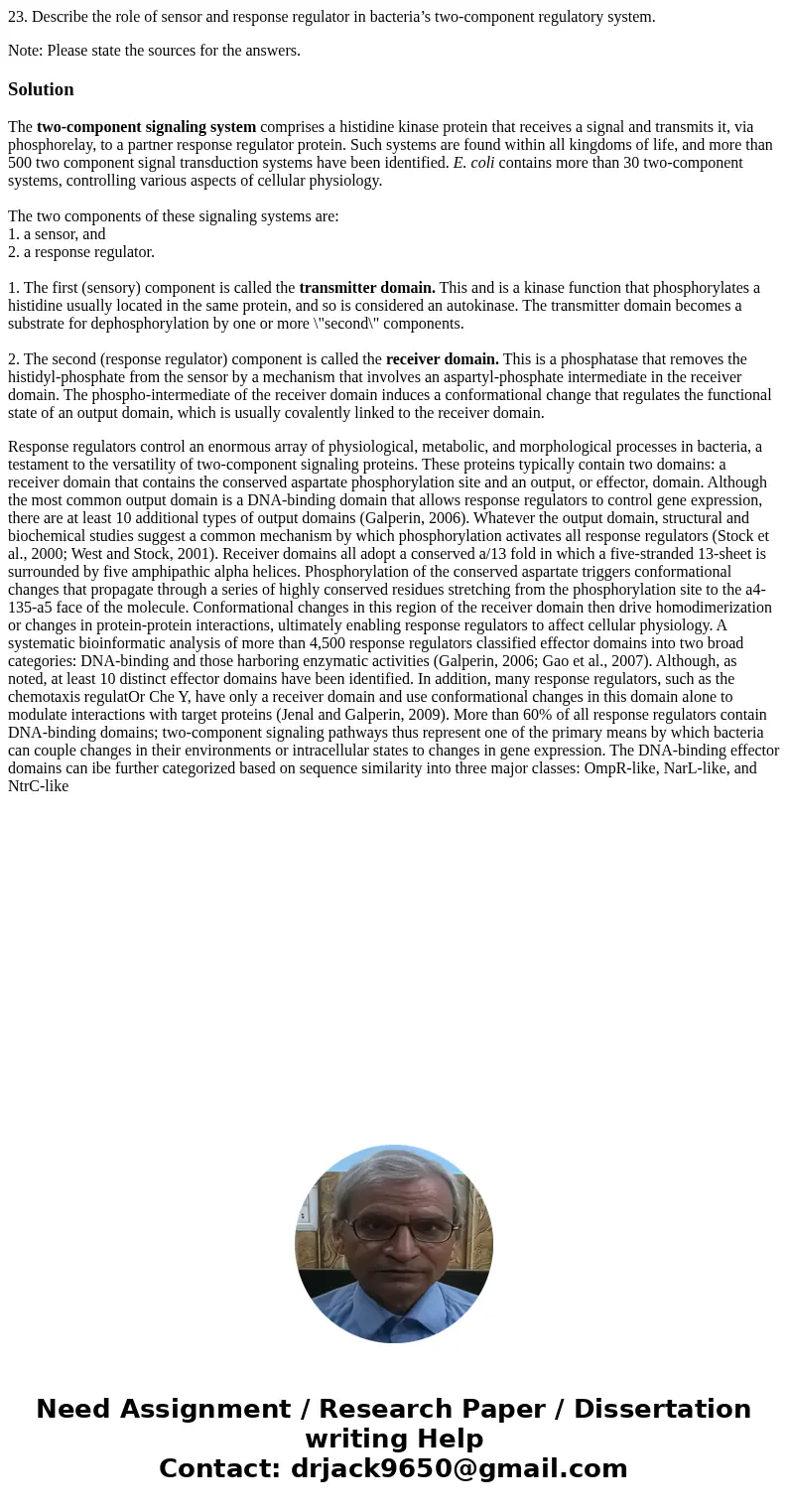23 Describe the role of sensor and response regulator in bac
23. Describe the role of sensor and response regulator in bacteria’s two-component regulatory system.
Note: Please state the sources for the answers.
Solution
The two-component signaling system comprises a histidine kinase protein that receives a signal and transmits it, via phosphorelay, to a partner response regulator protein. Such systems are found within all kingdoms of life, and more than 500 two component signal transduction systems have been identified. E. coli contains more than 30 two-component systems, controlling various aspects of cellular physiology.
The two components of these signaling systems are:
1. a sensor, and
2. a response regulator.
1. The first (sensory) component is called the transmitter domain. This and is a kinase function that phosphorylates a histidine usually located in the same protein, and so is considered an autokinase. The transmitter domain becomes a substrate for dephosphorylation by one or more \"second\" components.
2. The second (response regulator) component is called the receiver domain. This is a phosphatase that removes the histidyl-phosphate from the sensor by a mechanism that involves an aspartyl-phosphate intermediate in the receiver domain. The phospho-intermediate of the receiver domain induces a conformational change that regulates the functional state of an output domain, which is usually covalently linked to the receiver domain.
Response regulators control an enormous array of physiological, metabolic, and morphological processes in bacteria, a testament to the versatility of two-component signaling proteins. These proteins typically contain two domains: a receiver domain that contains the conserved aspartate phosphorylation site and an output, or effector, domain. Although the most common output domain is a DNA-binding domain that allows response regulators to control gene expression, there are at least 10 additional types of output domains (Galperin, 2006). Whatever the output domain, structural and biochemical studies suggest a common mechanism by which phosphorylation activates all response regulators (Stock et al., 2000; West and Stock, 2001). Receiver domains all adopt a conserved a/13 fold in which a five-stranded 13-sheet is surrounded by five amphipathic alpha helices. Phosphorylation of the conserved aspartate triggers conformational changes that propagate through a series of highly conserved residues stretching from the phosphorylation site to the a4-135-a5 face of the molecule. Conformational changes in this region of the receiver domain then drive homodimerization or changes in protein-protein interactions, ultimately enabling response regulators to affect cellular physiology. A systematic bioinformatic analysis of more than 4,500 response regulators classified effector domains into two broad categories: DNA-binding and those harboring enzymatic activities (Galperin, 2006; Gao et al., 2007). Although, as noted, at least 10 distinct effector domains have been identified. In addition, many response regulators, such as the chemotaxis regulatOr Che Y, have only a receiver domain and use conformational changes in this domain alone to modulate interactions with target proteins (Jenal and Galperin, 2009). More than 60% of all response regulators contain DNA-binding domains; two-component signaling pathways thus represent one of the primary means by which bacteria can couple changes in their environments or intracellular states to changes in gene expression. The DNA-binding effector domains can ibe further categorized based on sequence similarity into three major classes: OmpR-like, NarL-like, and NtrC-like

 Homework Sourse
Homework Sourse